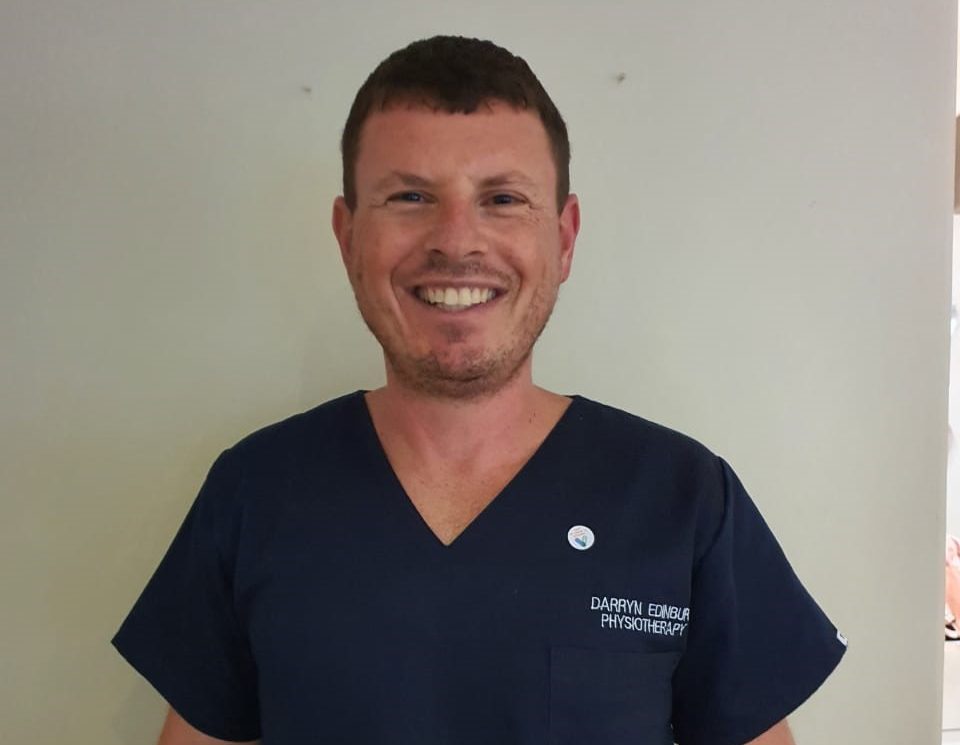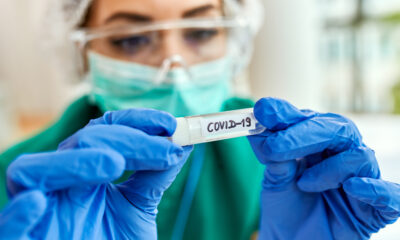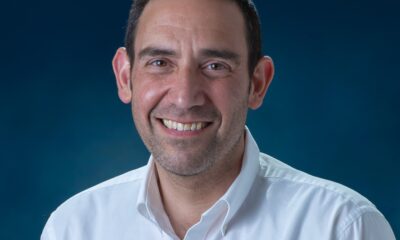
Featured Item

Physios fighting a war on COVID-19 frontline
Published
3 years agoon
We know about the doctors and nurses battling the pandemic, but there are also teams of other healthcare professionals who put their lives on the line to support COVID-19 patients in hospital wards. Physiotherapists (physios) are one such group, and their work puts them at particular risk of contracting the virus from their patients.
“I told my wife I was going to war,” recalls Darryn Edinburg, a 43-year-old father of three and hospital physiotherapist at Linksfield Park Clinic in Johannesburg.
“You just have to get stuck in. You can’t be scared, even though five physios in our team contracted the virus in the first wave, and one got quite ill. You go in, and the patients are coughing, and you’re moving them, getting them to walk and do breathing exercises, and they’re essentially coughing at you.”
Edinburg says at the start of the pandemic, the belief was that physios wouldn’t be needed to treat COVID-19-positive patients because the respiratory issues were seen as a dry cough. However, it soon became clear that pneumonia and the devastation that the virus wreaks on the body meant physiotherapy would be essential. “Suddenly, everyone realised that patients and doctors needed all the help they could get,” he says.
“It was a huge shock to see the effects of the virus on the patients. I don’t think doctors ever pictured such a scenario, never mind physios. It was completely surreal. We were seeing 30 and 40-year-olds with no co-morbidities struggling, and there was no explanation, especially in the second wave. It felt like a battle zone.”
Thirty-year-old Dalya Abromowitz was one such patient, spending eight days in a Cape Town hospital at the height of the second wave. Fit, healthy, and a non-smoker, she still ended up with COVID-19, pneumonia, and physiotherapy was key to her recovery.
“The physios were very important because almost everyone in the ward had COVID-19 pneumonia, and essentially that means mucus stuck in your lungs. It’s been very effective to try and loosen that, to try to cough it out,” she says. “At least once a day, physios would come in their hazmat suits – because patients cough a lot during the physio sessions – and they would do a few exercises. The first one would be to vibrate my ribs. I would lie on each side and the physio would apply vibrations with their hands. After a few gentle vibrations, I would cough massively.
“They would also get you to do four or five different breathing exercises, like deep belly breaths. It completely exhausts you. I remember after sessions, I would sleep for two or three hours, just because it’s really exhausting, especially when your oxygen levels are quite low. It can feel like you’ve run a marathon. A lot of the sessions are only 15 to 20 minutes because patients usually can’t tolerate much more than that,” she says.
“They would come Monday to Sunday, sometimes very early or late. They were very busy. They definitely put themselves at risk. That’s why they would wear such protective gear, even more so than nurses or doctors,” she says. Exercises included breathing through a straw to make bubbles in a bottle with water, or trying to keep a ball elevated by breathing out, into an apparatus. “Physio definitely helped me to recover,” Abromowitz says. “It helped to increase my oxygen levels, and helped with the pneumonia.”
Edinburg says he wears hospital scrubs, an apron, a surgical gown, an N95 mask, double gloves, a visor, and plastic sleeves when treating patients. “It wasn’t too bad in June and July because it was winter, but in December, it was vicious in the heat, and there was no air-conditioning because of the risk it poses for spreading the virus.”
He says a lot of patients have died. “Two were aged 42 and 46. One just got worse slowly. The other was meant to be discharged on a Sunday. On the Saturday, he had a relapse, was put on a ventilator, and he passed away two weeks ago. In the second wave, the age dropped by 20 years. Those who made it were the ones we thought weren’t going to make it, and those who died were the ones we thought were going to survive.”
Edinburg says physios have also become a support system for COVID-19 patients, often helping them to cope with anxiety. “You’ve got to educate and reassure, and teach them what they can do to feel better. For example, one thing we teach is positioning. Instead of lying on their back, we teach them to lie on their side or stomach, which allows for better breathing, functioning of the lungs, and oxygenation. We have also became the ‘eyes and ears’ of the doctors because they are so busy, they may have missed things.”
He says that the physio’s job doesn’t end when the patient is discharged. “The reality is that patients are still compromised. They may not even be medically better, but others are worse and need their hospital bed. We teach them not to overdo it at home, build strength over time, and have patience. But it’s hard – these guys used to be fit, running marathons, and now they can’t even walk to the bathroom without running out of breath. There is also the stigma of having home oxygen.
“We are so lucky to have Hatzolah, which checks on these patients every day. I have patients who aren’t Jewish, and they’re essentially on their own,” he says. He visits Jewish and non-Jewish patients at home, but tries to give non-Jewish patients extra support because they don’t have anything like Hatzolah.
Edinburg emphasises that the numbers may have dropped, but “COVID-19 is still around us. The hospital isn’t quiet. We need to carry on being vigilant.”
For him, the “best” part of the pandemic has been seeing “a few patients who we didn’t think were going to survive, at home and almost back to normal. We’ve been involved in the whole process, from intensive-care to home to rehabilitation”. Seeing doctors unite and support each other has also been fulfilling. The worst part has been “40-year-old patients, who you speak to, and then the next day, they’re not there – they passed away. It’s scary. It feels like it could be you.”










